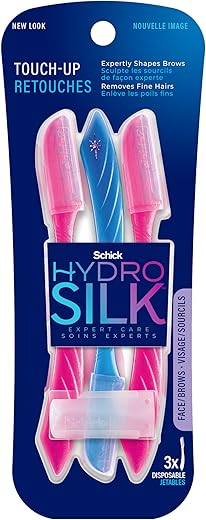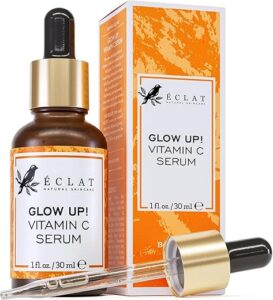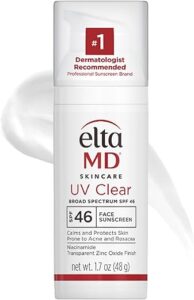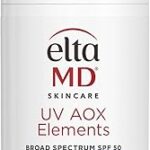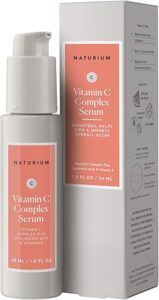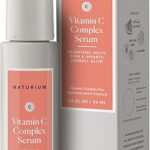A travel‑ready, budget dermaplane that preps skin for flawless makeup — quick, precise, and surprisingly handy.
Peach fuzz, stray brow hairs, and a slightly bumpy base can wreck an otherwise great makeup finish — and nobody wants to haul out a full kit for a five‑minute fix. For DIY enthusiasts, makers prepping for craft‑show photos, or anyone who likes to look polished on the go, a small, safe tool for quick touch‑ups can make a big difference.
The Schick Hydro Silk Touch‑Up Dermaplaning Tool is a slim, single‑blade razor with a precision cover and micro‑guard that’s built for fast smoothing and eyebrow shaping. It’s inexpensive, comes as a handy 3‑count pack and is recyclable through Schick’s program; they should plan to replace blades regularly and use short, gentle strokes at a 45° angle to avoid irritation — perfect to stash in a travel kit, craft bag, or vanity drawer for last‑minute prep.
Schick Hydro Silk Touch-Up Dermaplaner 3ct
A handy, travel-friendly dermaplaning tool that delivers quick smoothing and precise eyebrow shaping with minimal fuss. Best for people who want a fast, inexpensive way to refine brows, remove peach fuzz, and prep skin for flawless makeup application.
At-a-glance: What this tool is for
The Schick Hydro Silk Touch-Up dermaplaning tool is a pocket-sized single-blade razor designed for facial touch-ups. It’s intended to remove fine hairs, lightly exfoliate dead skin by dermaplaning, and help shape brows with a small precision cover for targeted work. Ideal for carry-on beauty kits, quick pre-event fixes, or weekly maintenance between salon appointments, it blends simplicity with thoughtful safety features.
Who will like it
This tool is well-suited to anyone who needs fast, low-cost facial hair maintenance: busy commuters, frequent travelers, makeup artists doing quick touch-ups, and DIY skincare fans who enjoy at-home prep before masks or makeup. It’s especially handy for those who want smoother makeup application without committing to waxing or professional dermaplaning sessions.
Key features explained
How it performs in everyday use
In practical terms, it shines when used as a fast fix. One swipe along a small section will clear fine hairs and lift a layer of dead skin, so foundation and powders blend more evenly. Because the device is compact and quick to use, it becomes the go-to for last-minute camera-ready checks or touch-ups during travel.
Users should not expect salon-level dermaplaning depth — it’s surface-level exfoliation and hair removal. For deeper exfoliation or longer-lasting hair reduction, professional options or other permanent hair-removal technologies are necessary.
Quick how-to (basic routine)
Safety and skin considerations
Materials & recyclability table
| Feature | Details |
|---|---|
| Blade type | Single stainless steel blade with micro-guards |
| Pack size | 3 disposable razors |
| Handle | Slim plastic, ergonomic grip |
| Extras | Precision cover included |
| Disposal | Eligible for Schick recycling program |
Practical tips and project ideas for DIYers
Maintenance and replacement advice
Who shouldn’t use it regularly
Final practical verdict
For crafters and at-home beauty enthusiasts, this tool is a low-risk way to gain immediate tactile and cosmetic improvements. It’s quick, affordable, and simple — perfect for weekend makeup sessions, craft-show touch-ups, or weekend trips where lightweight tools are preferred. While it won’t replace professional dermaplaning for deep exfoliation, it bridges the gap between salon visits and daily skincare routines with ease.

FAQ
They can often dermaplane with mild sensitivity if they take a gentle approach. Start with a small patch test on the jawline and wait 24 hours to check for redness or stinging.
They should avoid dermaplaning over active acne, open wounds, severe rosacea, or areas treated recently with strong chemical exfoliants or retinoids. If they take blood-thinning medications or have a skin condition, they should consult a dermatologist before trying it.
Frequency depends on hair growth, skin sensitivity, and personal preference. Many people start with once a week and then adjust based on results.
They should track how their skin responds and plan sessions before events or photo days. Aftercare—moisturizer and daily SPF—helps healthy recovery between sessions.
Dermaplaning removes hair at the surface and exfoliates without pulling hairs from the follicle. For many people it is gentler and less painful than waxing or plucking.
However, safe results depend on proper technique: keep the skin taut, use short controlled strokes, replace dull blades, and work on clean skin. They should avoid dermaplaning over active acne to prevent spreading bacteria.
No. Cutting hair at the surface does not change the hair follicle’s structure or growth rate.
If they dislike the initial stubbly feel, they can soften regrowth with a lightweight oil or hydrating primer and plan touch-ups according to how the hair grows back.
Yes. The slim shape and precision cover make it well suited for the upper lip and eyebrow edges when used carefully.
They can use a spoolie to comb brows into place first and a stencil or low-tack tape for symmetry. Finish with a calming gel or a light oil to soothe the area.
They should handle spent blades safely to prevent injury and follow recycling options when available.
If a recycle program is not available, check local household hazardous waste guidelines. Never toss loose blades into regular trash or recycling bins.
Yes. Dermaplaning removes dead skin and peach fuzz, which can help serums and masks absorb more evenly.
They often prefer to dermaplane in the evening, follow with a soothing moisturizer, and wear sunscreen the next day. A creative tip: dermaplane before a hydrating sheet mask for a smoother, more even result.


